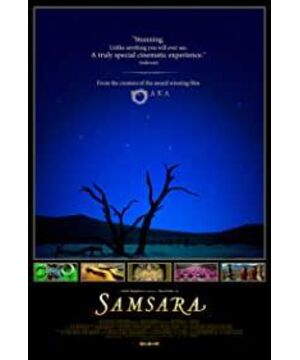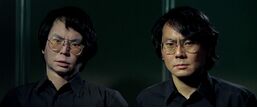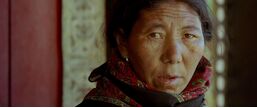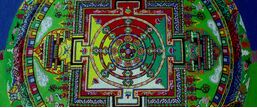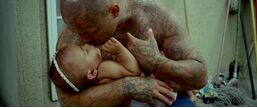At the beginning of the documentary, three Indonesian girls danced and performed the Balinese bow dance, with strange expressions, strange movements, and solemn and mysterious background music. The setting is to create a freer and broader contemplative space for the viewer. After all, "Reincarnation" is an existence that transcends time and space. Everyone who watches the entire documentary seriously seems to be endowed with the perspective of God, looking down on the changes of all things in the world. When we are in our personal life, we do not find that the things around us will change much, but when we stay out of it and look down at the world of others, we will have more sighs. Reincarnation is a process of constant and repeated changes. For a person, it is from birth to death, for a group, from gathering to dispersal, for a country, from prosperity to decline; for the whole world, it is from prosperity to decline. , is from existence to disappearance, for the entire human beings, from life and death, life and death, life and death, gathering, gathering, scattered, gathering, everything is a state of virtual reality. In order to give us a deep understanding of reincarnation, the editing of the video is well-intentioned, and the content with strong contrasts is put together. The sequence of the video content must be carefully arranged to present the vast space transition and the long passage of time in the universe. Reincarnation of life and death: A late-stage human embryonic image compared to a millennial swamp mummy in Jutland, Denmark, and children being baptized in a church in São Paulo, Brazil. A few shots later is a young boy lying in a coffin. This contrast between life and death is repeatedly presented in the documentary, which tells the inevitable birth, aging, sickness and death of human beings. The cycle of prosperity to decline: Shanghai, Tokyo's bustling streets and slums contrast, Shanghai and Tokyo are not prosperous cities from the beginning, and the slums are not dirty and chaotic from the beginning. The cycle of existence and disappearance: A strange car put chickens running around in the basket, and another scene, in a factory, chickens become food. There is also a picture where the assembler uses a very fast speed to form a gun from various parts on the table, while another picture shows one car after another being crushed and broken. All things are in the cycle of being and disappearing, disappearing and being. What strikes me the most terrifying and also the most impressive is the shocking performance of the French performance artist Olivier de Sagazan. He smeared mud and paint on his face, stuck a needle on his head, tore himself, and struggled constantly. It is a struggle to yearn for the sublime spirit in showing the inner animal nature of human beings. Human nature is wandering between divinity and animal nature. In the process of yearning for the sublime, it is inevitable to carry out a war between divinity and animal nature. The first time I felt the shock of reincarnation was when I was reading A Dream of Red Mansions. "A Dream of Red Mansions" actually shows reincarnation, and the process of Jia's residence from prosperity to decline is like a dream. Eternity is something that people can't get, and disillusionment seems to be the essence of life. The end of the documentary ends with the destruction of the sand-painted mandala in the Little Potala Palace on the Sino-Indian border. All of a sudden, everything turned to dust, just like the phrase "the whiteness is really clean" in "A Dream of Red Mansions".
View more about Samsara reviews


